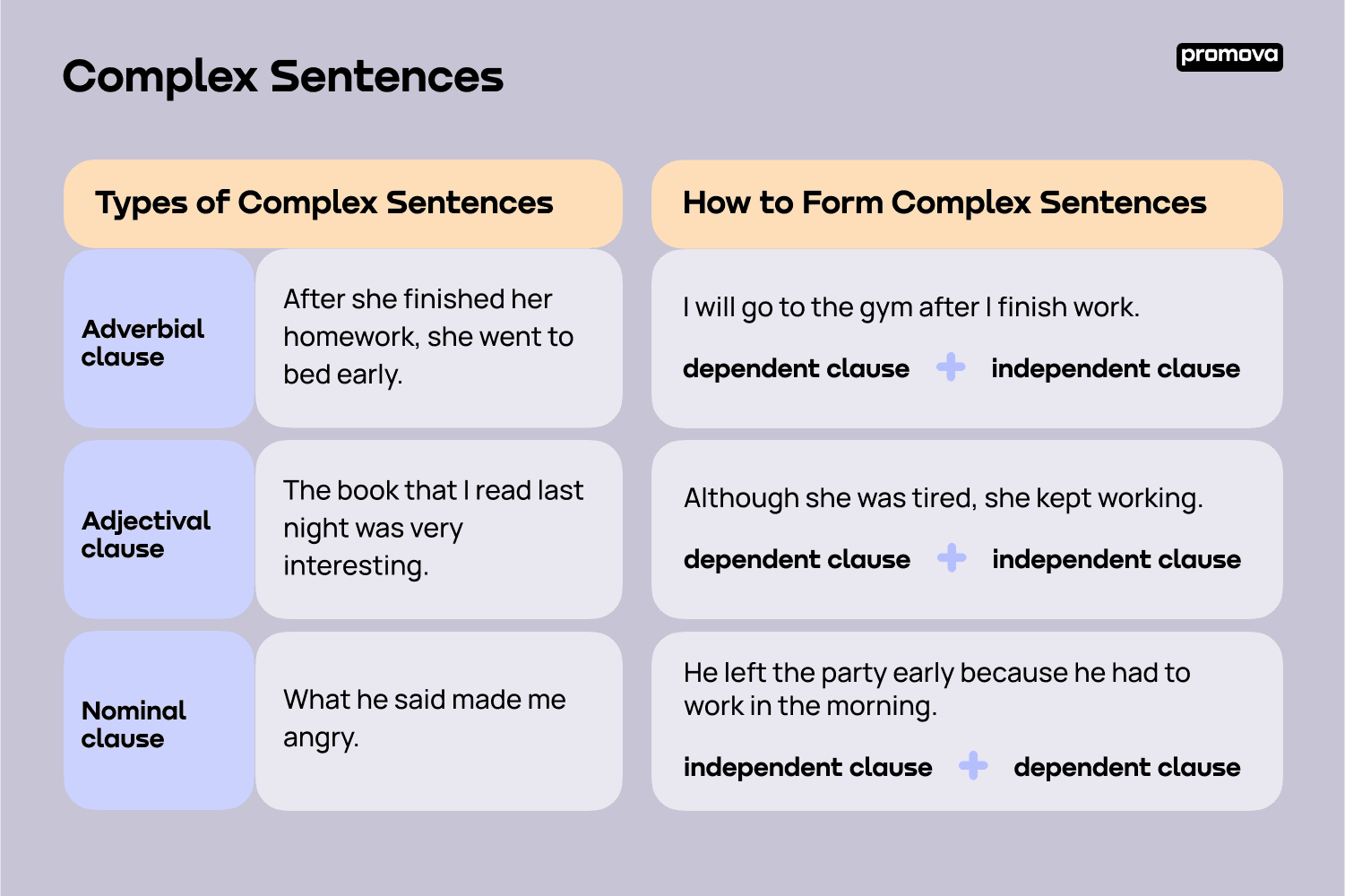Complex Sentences
Contents
Complex sentences are an essential part of English grammar. They allow us to convey more information and express more nuanced ideas than simple sentences. In this reference, we will explore what a complex sentence is, its structure, types, examples, how to form one, common mistakes, and see how it works in grammar.
What is a Complex Sentence?
A complex sentence includes one independent clause and one or more dependent clauses. An independent clause forms a complete sentence that can stand alone, while a dependent clause cannot. A dependent clause relies on an independent clause to complete its meaning. Complex sentences are used to connect ideas that are related to each other and to show the relationships between those ideas.
Understanding the Structure of a Complex Sentence
A complex sentence has a structure that consists of a single independent clause and one or more dependent clauses. The dependent clause is always introduced by a subordinating conjunction - "because," "although," "if," "when," and "while." The subordinating conjunction signals the relationship between the dependent clause and the independent clause.
For example: "Although it was raining, he decided to go for a walk." In this sentence, the independent clause is "he decided to go for a walk," and the dependent clause is "Although it was raining." The subordinating conjunction "although" shows the relationship between the two clauses.
Types of Complex Sentences
There are three types of complex sentences: adverbial, adjectival, and nominal. Adverbial clauses modify the verb in the independent clause, while adjectival clauses modify the noun in the independent clause. Nominal clauses act as a noun in the independent clause.
For example:
- Adverbial clause: "After she finished her homework, she went to bed early."
- Adjectival clause: "The book that I read last night was very interesting."
- Nominal clause: "What he said made me angry."
8
Examples of Complex Sentences
Here are some examples of complex sentences:
- "Because I studied hard, I passed the exam."
- "Although it was cold outside, she didn't wear a coat."
- "When he arrived at the station, the bus had already left."
- "I will buy the car that has the best gas mileage."
- "What he said was true, but it wasn't very helpful."
How to Form Complex Sentences
To form a complex sentence, you need to combine an independent clause with a dependent clause using a subordinating conjunction. The dependent clause can come before or after the independent clause.
"I will go to the gym after I finish work."
(dependent clause + independent clause)
"Although she was tired, she kept working."
(dependent clause + independent clause)
"He left the party early because he had to work in the morning."
(independent clause + dependent clause)

Common Mistakes
Here are a few things to avoid:
- Don't use a coordinating conjunction instead of a subordinating conjunction. Coordinating conjunctions like "and," "but," and "or," are used to join two independent clauses. Using a coordinating conjunction instead of a subordinating conjunction can create a run-on sentence.
- Avoid incorrect placement of commas. Commas are used to separate the dependent clause from the independent clause and to set off introductory phrases.
Summary
Complex sentences allow us to express complex ideas and connect related ideas. A complex sentence includes one independent clause and one or more dependent clauses. The dependent clause is always introduced by a subordinating conjunction. Now that you understand the rules, why not try crafting a few fun sentences of your own?
Comments